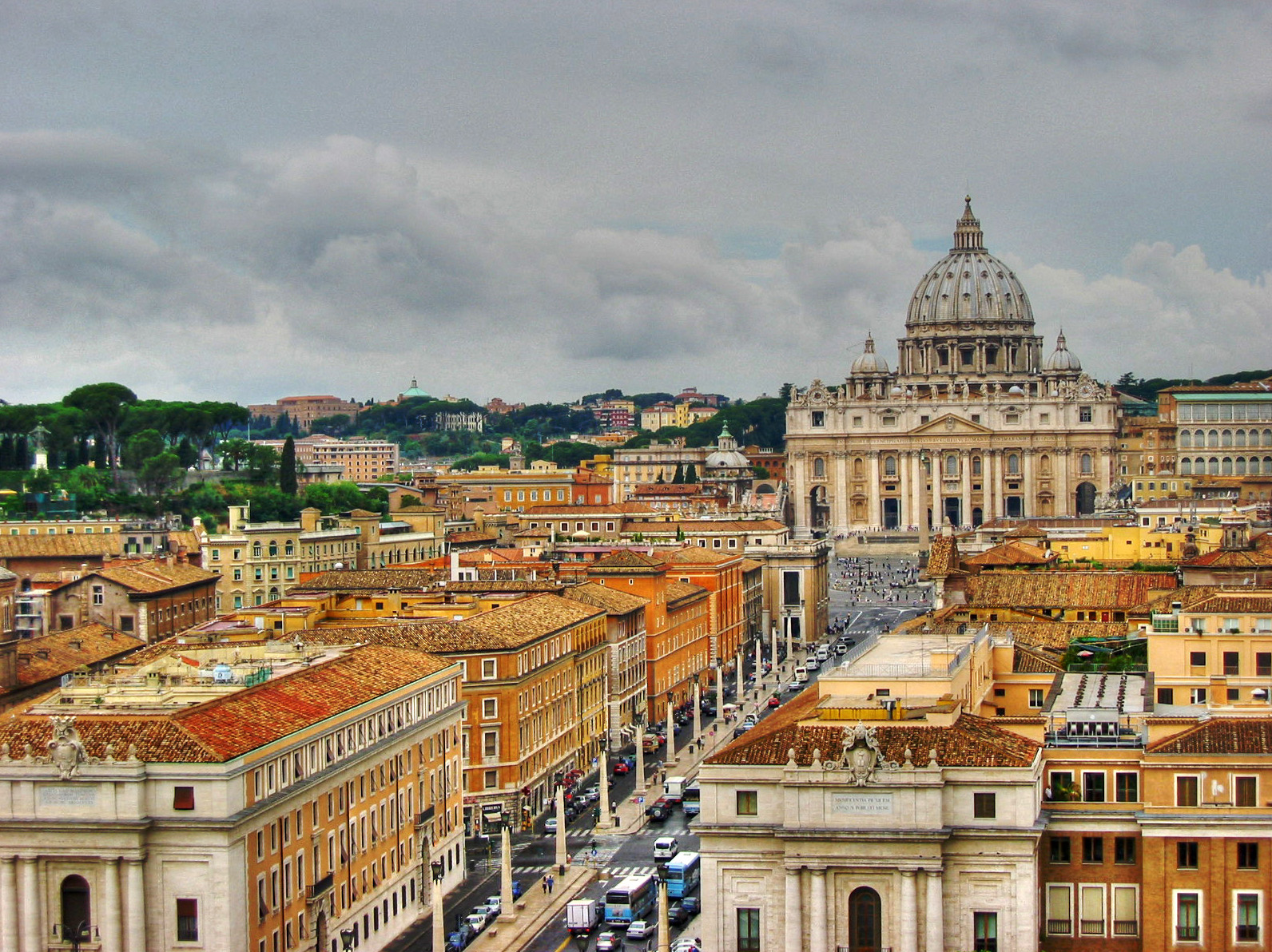|
Religion In The European Union
Religion in the European Union is diverse. The largest religion in the EU is Christianity, which accounted for 72.8% of European Union, EU population . Smaller groups include those of Islam, Buddhism, Judaism, Hinduism, and some East Asian religions, most concentrated in Germany and France. Also present are modern paganism, revival movements of Paganism#Ethnic religions of pre-Christian Europe, pre-Christianity European folk religions including Germanic neopaganism, Heathenism, Slavic neopaganism, Rodnovery, Romuva (religion), Romuva, and Druidry. Over the last several decades, religious practice has been on the decline in a process of secularisation. Eurostat's Eurobarometer survey in 2010 showed that 20% of EU citizens don't believe there is any sort of spirit, god, or life force. Many countries have experienced falling church attendance and membership in recent years. The countries with the most people reporting no belief in any sort of spirit, god, or higher power ... [...More Info...] [...Related Items...] OR: [Wikipedia] [Google] [Baidu] |
European Data Portal
On April 21, 2021 data.europa.eu was launched as a single access point for open data published by EU Institutions, national portals of EU Member states and non-member states, as well as international organisations of predominantly European scope. The portal consolidates datasets previously available via the EU Open Data Portal and the European Data Portal into a single meta-catalogue. The European Data Portal, launched in its beta version on November 16, 2015, was an initiative of the European Commission, and part of the Digital Single Market. Currently, more than 1,600,000 datasets are published on the portal, originating from 178 catalogues.The portal is a metadata catalogue: in it, metadata from other data and geospatial data catalogues are published following a common ontology, namely the DCAT Application Profile for data portals in Europe (DCAT-AP) with the aim of fostering and facilitating re-use of open data, promotion and support for the publication of (meta)data of high ... [...More Info...] [...Related Items...] OR: [Wikipedia] [Google] [Baidu] |
Romuva (religion)
Romuva is a neo-pagan movement derived from the traditional mythology of the Lithuanians, attempting to reconstruct the religious rituals of the Lithuanians before their Christianization in 1387. Practitioners of Romuva claim to continue Baltic pagan traditions which survived in folklore, customs and superstition. Romuva is a polytheistic pagan faith which asserts the sanctity of nature and ancestor worship. Practicing the Romuva faith is seen by many adherents as a form of cultural pride, along with celebrating traditional forms of art, retelling Baltic folklore, practicing traditional holidays, playing traditional Baltic music, singing traditional (songs), as well as ecological activism and stewarding sacred places. Romuva primarily exists in Lithuania but there are also congregations of adherents in Australia, Canada, Russia, the United States, and England. There are believers of Baltic pagan faiths in other nations, including Dievturība in Latvia.Dundzila (2007), p. 29 ... [...More Info...] [...Related Items...] OR: [Wikipedia] [Google] [Baidu] |
Slavic Neopaganism
The Slavic Native Faith, commonly known as Rodnovery and sometimes as Slavic Neopaganism, is a modern Paganism, modern Pagan religion. Classified as a new religious movement, its practitioners hearken back to the Slavic paganism, historical belief systems of the Slavs, Slavic peoples of Central and Eastern Europe, though the movement is inclusive of external influences and hosts a variety of currents. "Rodnovery" is a widely accepted self-descriptor within the community, although there are Rodnover organisations which further characterise the religion as Vedism, Orthodoxy, and Old Believers, Old Belief. Many Rodnovers regard their religion as a faithful continuation of the ancient beliefs that survived as a folk religion or a conscious "double belief" following the Christianisation of the Slavs in the Middle Ages. Rodnovery draws upon surviving historical and archaeological sources and folk religion, often integrating them with non-Slavic sources such as Hinduism (becaus ... [...More Info...] [...Related Items...] OR: [Wikipedia] [Google] [Baidu] |
Germanic Neopaganism
Heathenry, also termed Heathenism, contemporary Germanic Paganism, or Germanic Neopaganism, is a modern pagan religion. Scholars of religious studies classify it as a new religious movement. Developed in Europe during the early 20th century, its practitioners model it on the pre-Christian religions adhered to by the Germanic peoples of the Iron Age and Early Middle Ages. In an attempt to reconstruct these past belief systems, Heathenry uses surviving historical, archaeological, and folkloric evidence as a basis, although approaches to this material vary considerably. Heathenry does not have a unified theology but is typically polytheistic, centering on a pantheon of deities from pre-Christian Germanic Europe. It adopts cosmological views from these past societies, including an animistic view of the cosmos in which the natural world is imbued with spirits. The religion's deities and spirits are honored in sacrificial rites known as ''blóts'' in which food and libations ... [...More Info...] [...Related Items...] OR: [Wikipedia] [Google] [Baidu] |
Paganism
Paganism (, later 'civilian') is a term first used in the fourth century by early Christians for people in the Roman Empire who practiced polytheism, or ethnic religions other than Christianity, Judaism, and Samaritanism. In the time of the Roman Empire, individuals fell into the pagan class either because they were increasingly rural and provincial relative to the Christian population, or because they were not '' milites Christi'' (soldiers of Christ).J. J. O'Donnell (1977)''Paganus'': Evolution and Use, ''Classical Folia'', 31: 163–69. Alternative terms used in Christian texts were '' hellene'', '' gentile'', and '' heathen''. Ritual sacrifice was an integral part of ancient Greco-Roman religion and was regarded as an indication of whether a person was pagan or Christian. Paganism has broadly connoted the "religion of the peasantry". During and after the Middle Ages, the term ''paganism'' was applied to any non-Christian religion, and the term presumed a belief in fal ... [...More Info...] [...Related Items...] OR: [Wikipedia] [Google] [Baidu] |
Modern Paganism
Modern paganism, also known as contemporary paganism and neopaganism, spans a range of new religious movements variously influenced by the Paganism, beliefs of pre-modern peoples across Europe, North Africa, and the Near East. Despite some common similarities, contemporary pagan movements are diverse, sharing no single set of beliefs, practices, or religious texts. Religious studies, Scholars of religion may study the phenomenon as a movement divided into different religions, while others study neopaganism as a decentralized religion with an array of Religious denomination, denominations. Adherents rely on Christianization, pre-Christian, folkloric, and ethnographic sources to a variety of degrees; many of them follow a spirituality that they accept as entirely modern, while others claim to adhere to Prehistoric religion, prehistoric beliefs, or else, they attempt to revive indigenous religions as accurately as possible. List of modern pagan movements, Modern pagan movements are ... [...More Info...] [...Related Items...] OR: [Wikipedia] [Google] [Baidu] |
East Asian Religions
In the study of comparative religion, the East Asian religions, form a subset of the Eastern religions which originated in East Asia. This group includes Chinese religion overall, which further includes ancestor veneration, Chinese folk religion, Confucianism, Taoism and popular salvationist organisations (such as Yiguandao and Weixinism), as well as elements drawn from Mahayana Buddhism that form the core of Chinese and East Asian Buddhism at large. The group also includes Shinto and Tenrikyo of Japan, and Korean Shamanism, all of which combine shamanistic elements and indigenous ancestral worship with various influences from Chinese religions. Chinese salvationist religions have influenced the rise of Japanese new religions such Tenriism and Korean Jeungsanism; as these new religious movements draw upon indigenous traditions but are heavily influenced by Chinese philosophy and theology. All these religious traditions generally share core concepts of spirituality, div ... [...More Info...] [...Related Items...] OR: [Wikipedia] [Google] [Baidu] |
Hinduism
Hinduism () is an Hypernymy and hyponymy, umbrella term for a range of Indian religions, Indian List of religions and spiritual traditions#Indian religions, religious and spiritual traditions (Sampradaya, ''sampradaya''s) that are unified by adherence to the concept of ''dharma'', a Ṛta, cosmic order maintained by its followers through rituals and righteous living, as expounded in the Vedas. The word ''Hindu'' is an exonym, and while Hinduism has been called the oldest religion in the world, it has also been described by the modern term ''Sanātana Dharma'' () emphasizing its eternal nature. ''Vaidika Dharma'' () and ''Arya dharma'' are historical endonyms for Hinduism. Hinduism entails diverse systems of thought, marked by a range of shared Glossary of Hinduism terms, concepts that discuss God in Hinduism, theology, Hindu mythology, mythology, among other topics in Hindu texts, textual sources. Hindu texts have been classified into Śruti () and Smṛti (). The major Hin ... [...More Info...] [...Related Items...] OR: [Wikipedia] [Google] [Baidu] |
Judaism
Judaism () is an Abrahamic religions, Abrahamic, Monotheism, monotheistic, ethnic religion that comprises the collective spiritual, cultural, and legal traditions of the Jews, Jewish people. Religious Jews regard Judaism as their means of observing the Mosaic covenant, which they believe was established between God in Judaism, God and the Jewish people. The religion is considered one of the earliest monotheistic religions. Jewish religious doctrine encompasses a wide body of texts, practices, theological positions, and forms of organization. Among Judaism's core texts is the Torah—the first five books of the Hebrew Bible—and a collection of ancient Hebrew scriptures. The Tanakh, known in English as the Hebrew Bible, has the same books as Protestant Christianity's Old Testament, with some differences in order and content. In addition to the original written scripture, the supplemental Oral Torah is represented by later texts, such as the Midrash and the Talmud. The Hebrew ... [...More Info...] [...Related Items...] OR: [Wikipedia] [Google] [Baidu] |
Buddhism
Buddhism, also known as Buddhadharma and Dharmavinaya, is an Indian religion and List of philosophies, philosophical tradition based on Pre-sectarian Buddhism, teachings attributed to the Buddha, a wandering teacher who lived in the 6th or 5th century Before the Common Era, BCE. It is the Major religious groups, world's fourth-largest religion, with about 500 million followers, known as Buddhists, who comprise four percent of the global population. It arose in the eastern Gangetic plain as a movement in the 5th century BCE, and gradually spread throughout much of Asia. Buddhism has subsequently played a major role in Asian culture and spirituality, eventually spreading to Western world, the West in the 20th century. According to tradition, the Buddha instructed his followers in a path of bhavana, development which leads to Enlightenment in Buddhism, awakening and moksha, full liberation from ''Duḥkha, dukkha'' (). He regarded this path as a Middle Way between extremes su ... [...More Info...] [...Related Items...] OR: [Wikipedia] [Google] [Baidu] |
GESIS – Leibniz Institute For The Social Sciences
The GESIS – Leibniz Institute for the Social Sciences is the largest German infrastructure institute for the social sciences. It is headquartered in Mannheim, with a location in Cologne. With basic research-based services and consulting covering all levels of the scientific process, GESIS supports researchers in the social sciences. As of 2017, the president of GESIS is Christof Wolf. GESIS is part of the Leibniz Association and receives federal and state funding. History Established in 1986 as German Social Science Infrastructure Services (), GESIS originally consisted of the three independent institutes: * Social Science Information Centre (, IZ) in Bonn, * Central Archive for Empirical Social Research (, ZA) in Cologne, and * Centre for Survey Research and Methodology (, ZUMA) in Mannheim. In 2007, the three GESIS institutes merged into one. In November 2008, GESIS added "Leibniz Institute for the Social Sciences" to its name in order to emphasize its membership in th ... [...More Info...] [...Related Items...] OR: [Wikipedia] [Google] [Baidu] |






